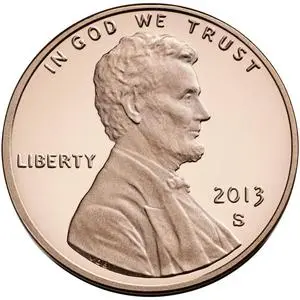The Future of the Penny: A Step Toward a Cashless Society

The recent directive from former President Donald Trump to cease the minting of pennies has ignited discussions around the future of physical currency in America. After 233 years in circulation since its establishment in 1792, the penny’s fate seems to be intersecting with the broader trend of moving toward a cashless society. At Extreme Investor Network, we dive deep into the implications of this shift, exploring not just the penny’s storied past, but also its role in the future economy.
A Brief History of the Penny
The journey of the penny is filled with fascinating designs and transformations. The first pennies were known as "large cents" and featured the Flowing Hair design back in 1793. Over the years, the coin has undergone numerous changes in design and composition, each reflecting the socio-economic conditions of its time.
- The Flowing Hair Cents (1793): With a chain reverse, this design was soon replaced for better striking.
- Draped Bust and Classic Head (1796-1814): The penny evolved through various designs that appealed to aesthetics as much as they did to functionality.
- The Matron Head and Braided Hair (1816-1839): These designs marked a transition phase as costs increased and public interest waned.
In 1857, large cents were phased out in favor of smaller, copper-nickel cents, showcasing the ongoing battle between production cost and consumer acceptance.
Evolution of the Cent: Key Designs
-
Flying Eagle Cent (1857-1858): Designed by James Longacre, this cent featured an eagle in flight but was soon retired due to striking problems.
-
Indian Head Cent (1859-1909): Captured public imagination with its depiction of Liberty in an Indian headdress and a nod to national unity.
- Lincoln Cent (1909-Present): Perhaps the most well-known version, the Lincoln Cent was launched to commemorate the 100th anniversary of Abraham Lincoln’s birth. The design has changed over time, yet it remains a staple in American currency, officially making it the longest continuously minted U.S. coin.
The Cost of Minting Pennies
In recent years, the cost of producing pennies has skyrocketed. As of 2023, it costs the U.S. Mint approximately 2.72 cents to produce each penny, a figure that has steadily risen and was reported to be as high as 3.7 cents for FY24. This situation begs the question: why continue to mint a coin that costs more to produce than its face value?
Trump’s move to halt penny production is echoed by sentiments that argue for economic efficiency: “For far too long, the United States has minted pennies which literally cost us more than 2 cents. This is so wasteful!” This pragmatic approach resonates with an increasingly aware public, prepared to rethink the necessity of low-value coins.
Moving Toward a Cashless Society
The discontinuation of the penny marks a significant milestone in the broader agenda of moving towards a cashless society. While existing pennies will still circulate and maintain their status as legal tender, the government appears to be laying the groundwork for a future where physical coins could become increasingly obsolete. Canada has already taken a similar step by eliminating the penny altogether, allowing prices to be rounded to the nearest 5 cents—a change that the American public may soon need to embrace.
Implications for Future Minting Practices
Interestingly, in addition to the penny, the nickel is also costly to produce, which may prompt further discussions around the elimination of other low-denomination coins. As the government gradually introduces this new approach to currency minting, it’s crucial for investors and consumers alike to stay informed about how these changes could affect economic practices, inflation, and even the collectibles market.
A New Era of Digital Currency
While the conversation around physical coins evolves, another significant movement is happening behind the scenes. Trump signed an executive order to strengthen American leadership in digital financial technology, effectively curbing the creation of a Central Bank Digital Currency (CBDC) while promoting the regulation of cryptocurrencies. This signals that while coins may be diminishing, digital currencies—whether from private banks or established cryptocurrencies—are poised for growth.
This dual trajectory toward a minimized physical currency and a boosted digital currency environment indicates a major shift in how we handle money and investments. As a key player in this discourse, Extreme Investor Network encourages readers to think critically about these changes.
Wrapping Up
As the landscape of currency evolves, it’s essential to remain astute and aware of both historical trends and future implications. The penny’s phase-out symbolizes a shift toward a society that may soon exist largely without cash—a transition that could redefine how transactions occur while transforming our investment considerations.
Stay tuned with Extreme Investor Network as we continue to monitor these developments, providing you with insights that empower you to stay ahead of the economic curve. Let us continue the conversation—how do you feel about a cashless society? Are you ready for the changes to come?

